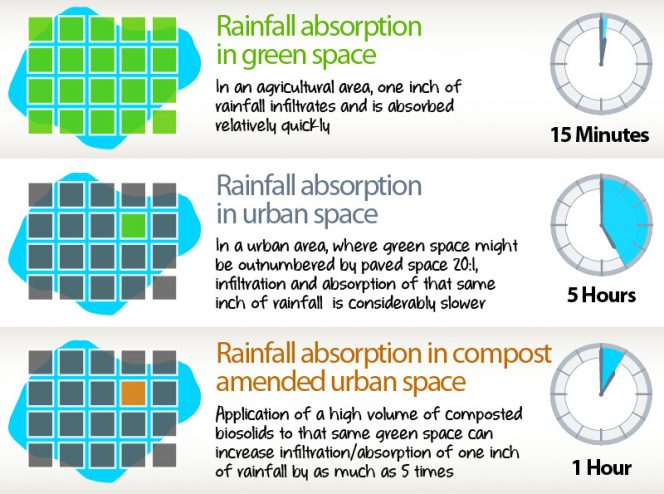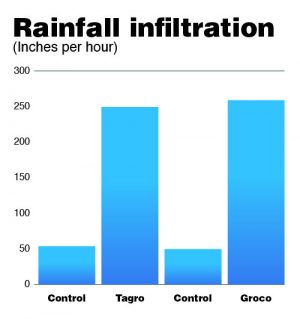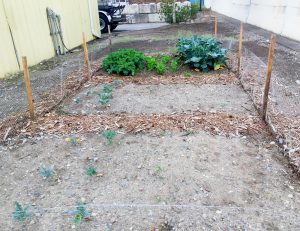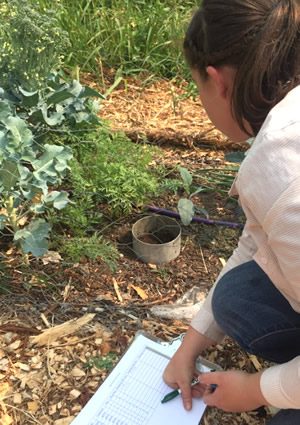
Sally Brown
It’s all about increasing soil pore space.
There are certain things we BioCyclers know — know in the way that you can recite without thinking. Statements like: Compost helps water infiltrate soils. We can all parrot this. Some of us can even go into detail of why and how this happens (see box). But having these feel good sayings without quantitative information to back them up doesn’t always help to move the product. To a city engineer, these feel good statements can make you sound like a new age guru pushing a dietary supplement rather than a knowledgeable resource with alternative solutions. So how about we use some recent data to put that feel good statement into a real world perspective?

I’m currently in the middle of a multiyear field study where we are looking at the connection between adding organic amendments to soils and soil and plant health. We have three sites in Washington State, each with different soil types and each with different amendments added. At the Renton site we’ve added high rates of GroCo biosolids compost. At the Tacoma wastewater treatment plant site, high rates of Tagro biosolids based topsoil were applied. At Monroe we’ve added vermicompost. For two of those sites we’ve seen dramatic increases in water infiltration rate. At Monroe, it’s too early to tell. We’ve seen increases in soil organic matter but not as much as the other sites. The “Rainfall Infiltration” bar chart (below) shows what the increase looked like.

The photo is from one of the garden spaces in Tacoma. You can see that the plots in the front received fertilizer while the one in the back got the Tagro topsoil. In addition to improved infiltration we got a lot more broccoli. A benefit for some, not so much for others.
Infiltration Math
Back to the infiltration. Here are some ways to explain what that increase means. The area at the Tacoma treatment plant where we have the plots is mostly concrete and asphalt. This is similar to most cities. The grey and black outnumber the brown and green. We saw an increase in infiltration from 50 inches/hour in the control soil to 250 inches/hour in the amended soil. (see Box on calculating infiltration). Of course, you never get rainfall at rates even close to 50 inches/hour but you can get over an inch an hour. Infiltration rate for concrete and asphalt is significantly less than an inch an hour — it is effectively zero inches an hour, even taking into account cracks in the pavement. All of the water landing on that asphalt has to go somewhere.

Plots in the front of this garden space at Tacoma WWTP received fertilizer while the one in the back got the Tagro topsoil.
Having a major storm event over several hours or days, that 5x more efficient infiltration rate (the control vs the amended soil) is more critical. It means that one-fifth of the compost amended greenspace can accommodate the rainfall of 1 unit of regular soil. It means that small green patches in cities can drastically reduce urban flooding and combined sewer overflows. It means fewer homes lost to floods, less highway flooding, less impact.
With a changing climate intense storms are expected to occur more frequently. Understanding that compost can make green areas absorb that much more water provides information that any engineer can appreciate
It also means a local use for compost. If all the yards and parking strips in urban areas use the compost that means even in a torrential downpour you’d be able to cross the street without getting your shoes and socks soaked.
Sally Brown, BioCycle’s Senior Adviser, is a Research Professor in the College of the Environment at the University of Washington.











